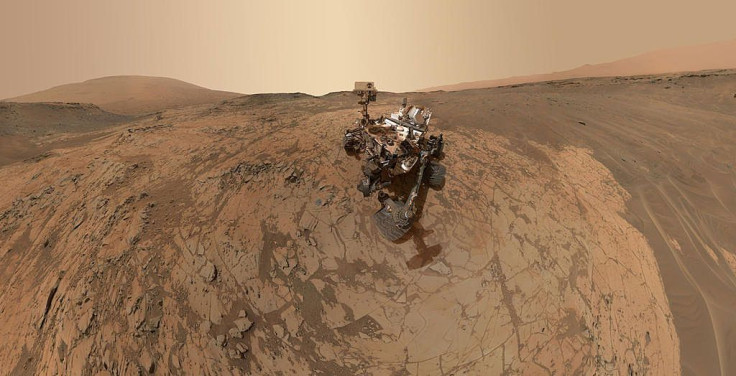See Stunning Images Of Mars Showing Where Ancient Water Once Flowed

Mars once hosted liquid water on its surface, and a new view of the Red Planet shows where rivers once carved its surface.
The European Space Agency (ESA) released new images of Mars that prove the Red Planet's history of flowing water. Taken by the ESA's Mars Express satellite late last year, the new Mars images show a system of valleys located in the southern highlands, just east of the Huygens impact crater and north of Hellas, which is the planet's largest impact basin, according to the ESA website. In the photos, the ancient, heavily cratered region show tell-tale signs of flowing water despite the billions of years of erosion.
New images from Mars Express! They show a beautiful example of a dried out river valley network, a sign that #water was once flowing on the surface of #Mars.
— ESA (@esa) February 21, 2019
Read more: https://t.co/7VmpIlaKEM pic.twitter.com/ma7jqCtpyM
The Mars of today is a barren wasteland, but it was once awash in blue like Earth around 3.4 billion years ago. The planet once had a large ocean in its northern hemisphere, lakes and many rivers. A thick, warm atmosphere previously covered a primitive Mars, allowing Earth's neighbor to host liquid water on its surface.
However, Mars' thick atmosphere eventually evaporated, taking the liquid water along with it. Now, aside from the frozen ice at Mars' poles, the only evidence of the planet's ancient flowing water is the dried-up riverbeds and clay-life deposits that would have required the presence of water to form.
As seen in one of ESA's latest photos from Mars, water once flowed downhill from the north, and this formed rivers as wide as 1.2 miles (2 kilometers) and as deep as 650 feet (200 meters), according to the ESA. The valley looks smooth and fragmented today, but evidence of it being a riverbed once can still be seen.
The space agency described the valley system's pattern as "dendritic" as it appears "a little like tree branches stemming from a central trunk." Dendritic originates from the Greek word for tree, dendron, and seems to be an apt description as channels branch out from the central valley which later also split off on their journey outwards.
Earth also has its own dendritic water systems, such as the Yarlung Tsangpo river. This river flows from western Tibet and runs through China, India and Bangladesh.
The discovery of flowing water on the surface of the Red Planet gives rise to more mysteries that need to be unlocked. Scientists will need to figure out where the rushing water came from, whether it originated from melting glaciers or from below the surface. More studies will also need to be conducted to determine when exactly Mars' liquid dried up and if this is a sign that the planet once hosted life.
Check out more images of Mars' surface from the ESA here.
© Copyright IBTimes 2025. All rights reserved.





















